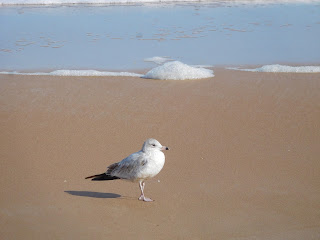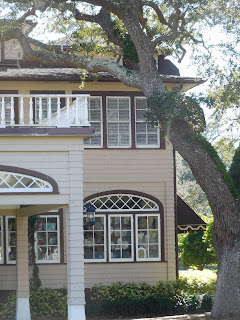Whenever I am in Florida, as I was a few days ago, I see lots of recreational vehicles as well as "campers". In fact, when I ride along A1A, I pass by at least one RV or camper park.
Although trailers towed behind cars or carried on the backs of trucks are referred to as "campers", and people who use them--or even RVs--say they are "camping", I have a difficult time equating them with the camping I have done.
There were days when I pedaled until I got lost, or couldn't pedal or see--or just didn't want to ride--anymore and simply unfurled my sleeping bag in a field or stretch of woods, or under a bridge. There were also times when I pitched a tent or simply strung a piece of canvas or plastic between trees or other immobile objects and slept under it. Perhaps having had such experiences makes it difficult for me to think that a person watching a wide-screen TV, even if he or she is in the open air, is "camping".
Still, I can understand why people travel with "campers" or RV's: They want to travel whenever they want, wherever they want, with as many of the conveniences of home as they can take with them. That is also one of the reasons why they don't, and probably wouldn't, tour or camp by bicycle: Even if you have front and rear panniers, a handlebar bag and a seat pack, you can't carry many of the comforts of even the most basic homes.
Perhaps a UFO could get them to travel by bicycle:
UFO stands for Urban Freedom Outlander, and this trailer is the Mark II model. If there were camper trailers in ET, they might look something like that!
If the space-alien look isn't your thing, perhaps you might consider this:
Would sleeping in either of those trailers fit your definition of "camping"? Even if it doesn't, at least pedaling either of them constitutes a bona fide outdoor activity--and, I would imagine, a workout!
Although trailers towed behind cars or carried on the backs of trucks are referred to as "campers", and people who use them--or even RVs--say they are "camping", I have a difficult time equating them with the camping I have done.
There were days when I pedaled until I got lost, or couldn't pedal or see--or just didn't want to ride--anymore and simply unfurled my sleeping bag in a field or stretch of woods, or under a bridge. There were also times when I pitched a tent or simply strung a piece of canvas or plastic between trees or other immobile objects and slept under it. Perhaps having had such experiences makes it difficult for me to think that a person watching a wide-screen TV, even if he or she is in the open air, is "camping".
Still, I can understand why people travel with "campers" or RV's: They want to travel whenever they want, wherever they want, with as many of the conveniences of home as they can take with them. That is also one of the reasons why they don't, and probably wouldn't, tour or camp by bicycle: Even if you have front and rear panniers, a handlebar bag and a seat pack, you can't carry many of the comforts of even the most basic homes.
Perhaps a UFO could get them to travel by bicycle:
UFO stands for Urban Freedom Outlander, and this trailer is the Mark II model. If there were camper trailers in ET, they might look something like that!
If the space-alien look isn't your thing, perhaps you might consider this:
Would sleeping in either of those trailers fit your definition of "camping"? Even if it doesn't, at least pedaling either of them constitutes a bona fide outdoor activity--and, I would imagine, a workout!

















































